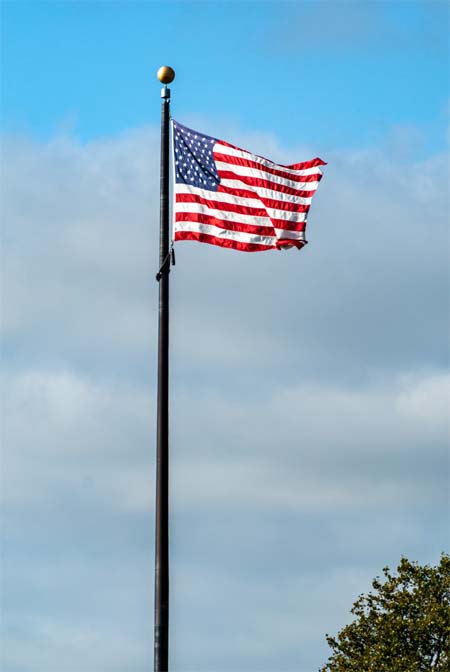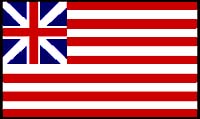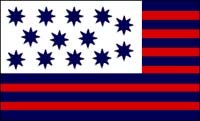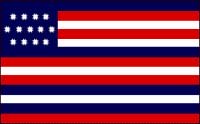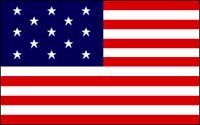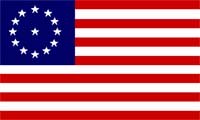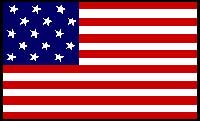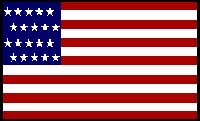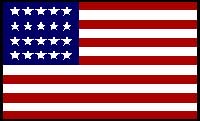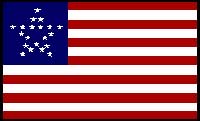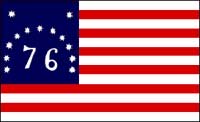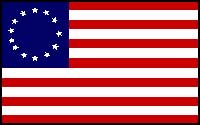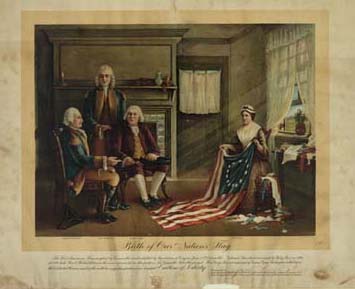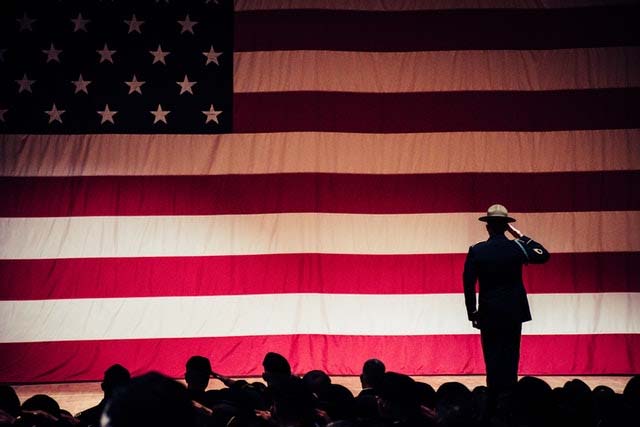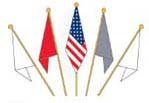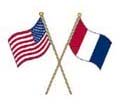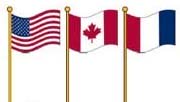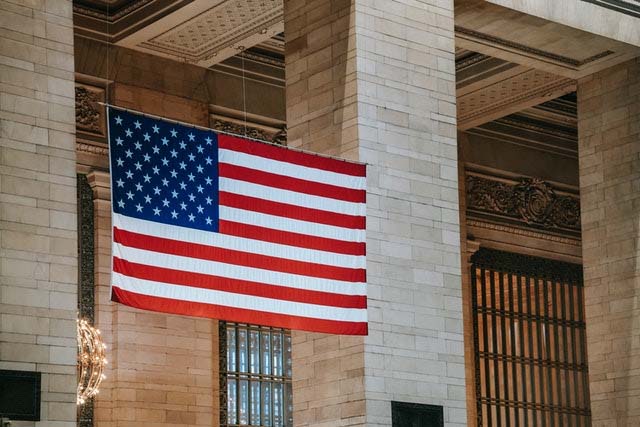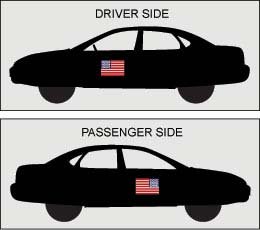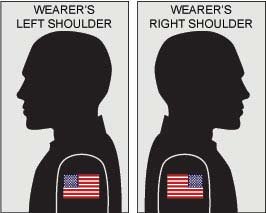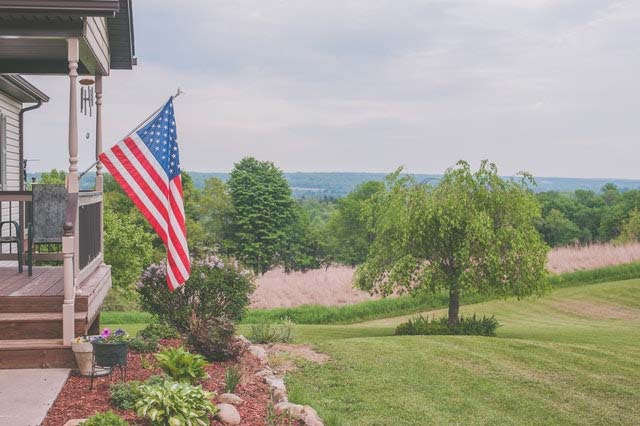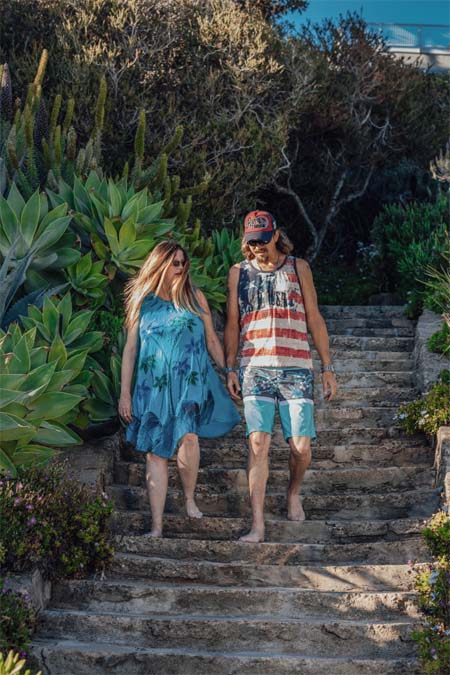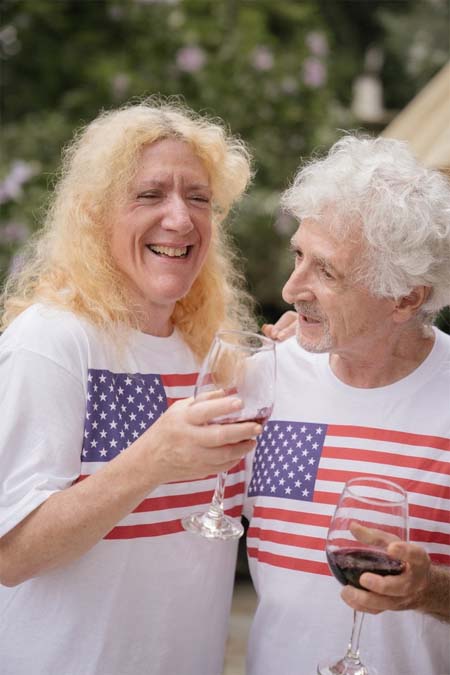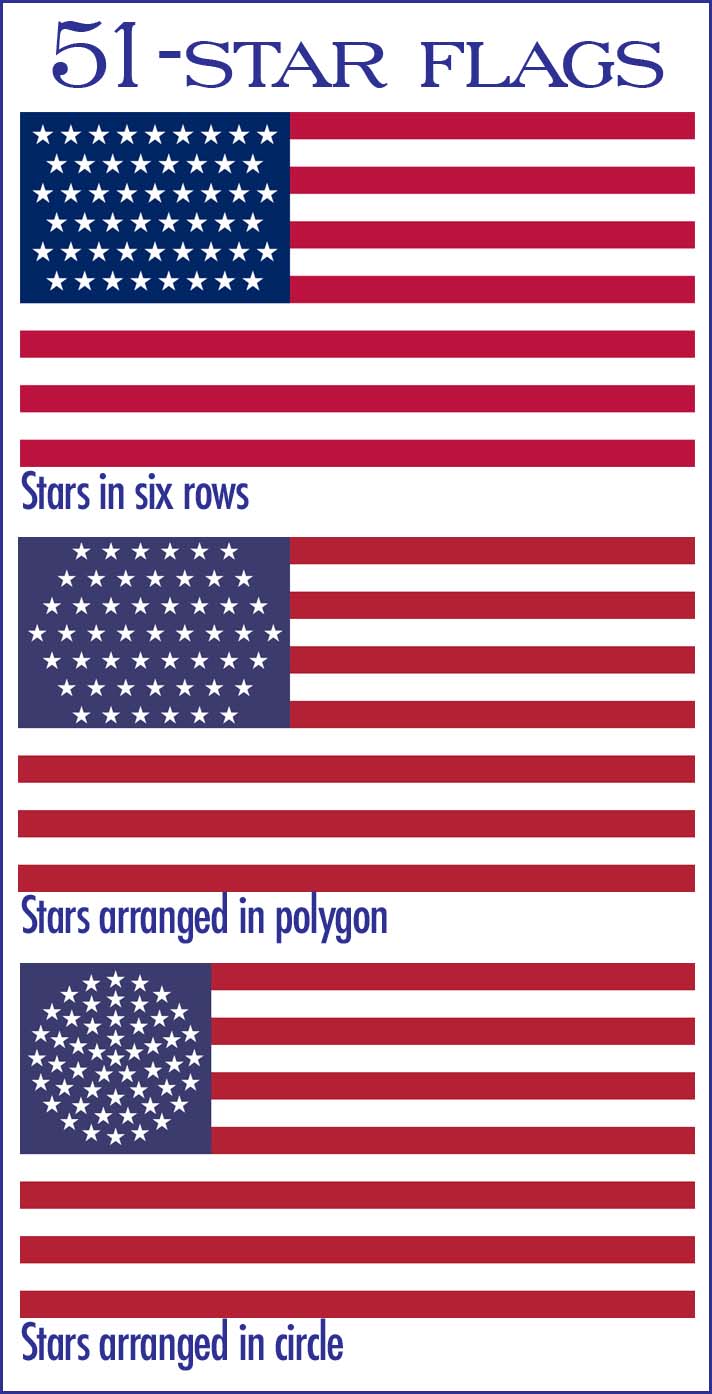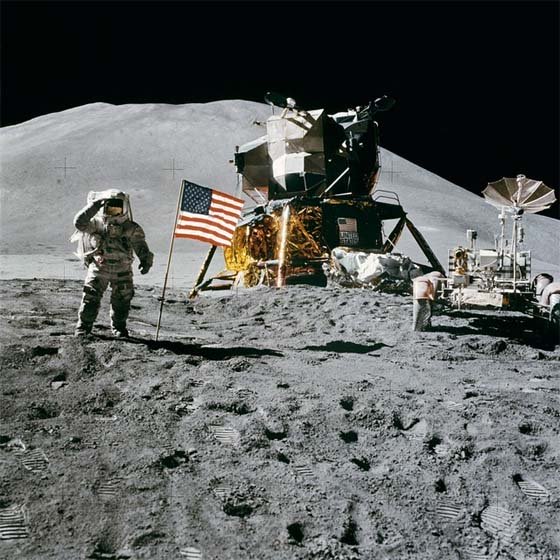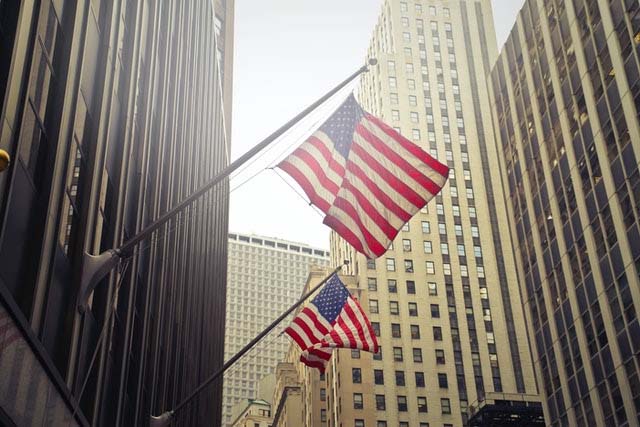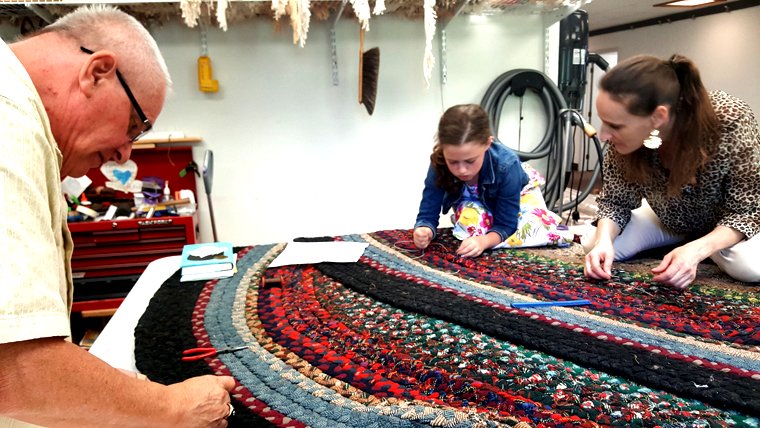FLAG DAY HISTORY
FLAG DAY - JUNE 14
On June 14, Americans have the opportunity to proclaim our respect and honor for our country by flying the American flag in the front of our homes, attending a Flag Day parade or other patriotic observances, and teaching our children about the history of the American flag and Flag Day.
The date of June 14 was chosen for Flag Day because it commemorates the date of June 14, 1777, when the Continental Congress' Marine Committee sponsored the US Flag Resolution which adopted the first design for the national flag of the United States. (See below-American Flag History).
In 1916, President Woodrow Wilson issued a presidential proclamation establishing June 14 as a national Flag Day.
In 1927, President Coolidge also issued a Flag Day presidential proclamation.
But it wasn’t until August 3, 1949, that Congress enacted legislation designating June 14 as the national Flag Day and President Truman signed the legislation into law.
This legislation also called upon the sitting president to issue a flag day proclamation every year. However, Flag Day is not an official holiday except in Pennsylvania.
AMERICAN FLAG HISTORY
The version of the first Stars and Stripes that we are familiar with today (13-star, 13-stripe) was hardly known at the time of the American Revolution. The flag below (Continental Colors Flag or Grand Union Flag) was the de-facto (non-official) American flag on July 4, 1776. It has also been called the Congress Flag, the Cambridge Flag, and the First Navy Ensign. It consisted of 13 red and white alternating stripes and a Union Jack in the corner.
Actually, creating an official US flag had a low priority with Congress at the time of the Revolution because of the existence of the de-facto Continental Colors flag. Creating the Great Seal of the United States to denote America's sovereignty was the congressional priority. Thus, on July 4, 1776, Congress created the first of three US Great Seal committees.
At the time of the second US Great Seal Committee Francis Hopkinson, a New Jersey Congressman and signer of the Declaration of Independence, was a consultant to that committee. He also commanded the Continental Navy from mid-November 1776 to mid-August 1778.
When Hopkinson became the Great Seal Committee's consultant, he introduced seven white stripes and six red stripes to the Great Seal. Hopkinson introduced the flag motif he had designed for the US Navy into his seal for the Admiralty.
On June 14, 1777, the Second Continental Congress passed the now famous resolution (the Flag Act) that stated the colors and design of the new American flag.
The Flag Act stated: “Resolved, That the flag of the United States be made of thirteen stripes, alternate red and white; that the union be thirteen stars, white in a blue field, representing a new Constellation.”
Before the Flag Act, at the time of the American Revolution, the stars on most flags were arranged in rows or an oval of 12 stars with one in the center. Below are some variations of the early American flag used in different battles around the country.
The design of the American flag has been modified 27 times since 1777.
After Vermont and Kentucky joined the union in 1791 and 1792, a Congressional act of 1794 adopted a flag with 15 stars and 15 stripes, effective in May of 1795.
In 1818, a Congressional act mandated the stripes be fixed at 13 and one new star be added on the 4th of July after each state’s admission to the Union.
There were no rules, however, for the arrangement of the stars. Thus in 1818, when the US consisted of 20 states, several flags were used simultaneously with different arrangements.
In 1959, President Eisenhower ordered the 50th star for Hawaii, the last state to join the United States.
THE MYSTERY OF WHO CREATED THE FIRST AMERICAN FLAG!
Who created the first American flag? Was it Betsy Ross or Francis Hopkinson?
Most of us may have been taught in school that Betsy Ross created the first American flag, the Stars and Stripes. This has since been proven by historians to be somewhat of a myth!
The First US Flag
After the American Civil War, the Centennial of 1876 was fast approaching. Americans knew the Grand Union Flag (Continental Colors) was the first US flag, but they wanted to know who the maker of the first Stars and Stripes was.
Betsy Ross' Grandson
In 1870, William Canby, Betsy Ross's grandson, read a paper before the Pennsylvania Historical Society stating that his grandmother had made the first Stars and Stripes, even though he had no evidence of this.
To prove his story, he asked relatives who had worked for his grandmother, Betsy Ross, to swear before notaries public that they had HEARD this family story. These relatives included a cousin, a cousin once-removed, and an aunt, but strangely, not his own mother, Jane Canby. This story quickly gained acceptance.
Charles H. Weisgerger's Painting
In 1893, Charles H. Weisgerber painted a large depiction of the alleged event for the Columbian Exposition in Chicago titled, 'The Birth of Our Nation's Flag.' Mr. Weisgerber entered a contest with his painting and won first prize. Thus, the rest is 'history' based on folklore and a painting! This was also the first time that Betsy Ross was associated with her flag.
Francis Hopkinson's Sketches Discovered
Meanwhile, the papers and sketches of Francis Hopkinson remained lost until 1917 when Harvard doctoral candidate George E. Hastings found them at the Library of Congress. With the discovery of Hopkinson's sketches, we now have evidence that he was the real designer of the United States flag.
Betsy Ross' Contribution
Betsy Ross was an upholsterer, and upholsterers normally were
not flag makers. However, Betsy Ross and George Washington were parishioners at the same
church. Ross had actually sewn some buttons for Washington and had at one time made
some flags for the Pennsylvania State Navy Board. Furthermore, Betsy Ross and her husband John made bed hangings for George Washington in 1774.
According to William Canby, George Washington himself asked Betsy Ross to sew the first flag. But the origin of the Stars and Stripes was a navy affair, and George Washington was not in the Continental Navy. However, as stated above, Francis Hopkinson was running the Navy from mid-November 1776 to mid-August 1778, a time period that includes June 14, 1777, when the Continental Marine (maritime) Committee sponsored the US Flag Resolution.
The truth is that Betsy Ross made improvements to Hopkinson’s design and sewed variants of the first flag. This flag was created in the 1790s, not during the Revolutionary wartime.
Francis Hopkinson’s design featured six-sided stars and Ross demonstrated
that 5-sided stars would be much easier to manufacture. She
also suggested the proportions be changed from a square flag to one that would be
one third longer than its width.
Besides changing from 6-sided stars to 5-sided stars, she suggested that the stars should not be scattered over the field but be either in lines or in some other form such as a circle or a star. Her ideas were adopted.
Betsy Ross made flags for 50 years. The so-called 'Betsy Ross Flag' was created in the 1790s, not during the Revolutionary wartime. Unfortunately, the flag purported to have been the first flag created by Betsy Ross does not exist today.
CURRENT FLAG DESIGN
In 1958 Robert Heft was an 18-year-old high school student in Lancaster, Ohio. The high school class project for that year was to produce a new flag design for 50 stars, needed because stars for new states Alaska and Hawaii had to be included.
Heft’s design received a B-. He asked his teacher if his grade would be changed to an A if his design was accepted by Congress. In 1959, Heft’s design was accepted, and he received his A grade!
Heft’s flag was officially raised for the first time on the 4th of July in 1960 at Baltimore’s Fort McHenry.
WHAT DO THE COLORS OF THE FLAG REPRESENT?
There is no remaining record and no official designation or meaning for the red, white, and blue colors of the flag. However, the 1782 Congress of the Confederation chose those colors for the Great Seal of the United State for the following reasons:
- Red stands for valor and hardiness.
- White stands for purity and innocence.
- Blue stands for vigilance, perseverance, and justice.
There is also a legend that George Washington saw the stars as being taken from the sky, the red from the British colors, and the white stripes signified the secession from the home country.
WHY WERE THERE ORIGINALLY 13 STARS IN A CIRCLE?
The 13 stars are in a circle on the first American flag so that no one colony would be viewed above another. George Washington is reported as saying the 13 stars in a circle would stand as a new constellation in the heavens. That motif may also denote eternity as per William Barton, consultant to the third US Great Seal Committee.
The 13 stars, of course represent the 13 original colonies:
Delaware, Pennsylvania, New Jersey, Georgia, Connecticut, Massachusetts, Maryland, South Carolina, North Carolina, New Hampshire, Virginia, New York, and Rhode Island.
WHY IS THE FLAG CALLED 'OLD GLORY?'
Old Glory became a nickname for all American flags when young Captain William Driver, a shipmaster from Salem, Massachusetts, received a flag of 24 stars from his mother and friends, which he hoisted on his first ship. As the flag opened to the ocean breeze, he christened it ‘Old Glory.’
After he left the sea, he moved to Nashville, Tennessee, and on every holiday, he displayed 'Old Glory' outside his house by a rope extending from an upstairs room to a tree across the street.
When the Union army occupied Nashville, Driver gave the flag to the troops to be flown for a short time over the State Capitol.
WHICH FLAG WAS THE INSPIRATION FOR THE SONG,
'THE STAR-SPANGLED BANNER'?
The inspiration for Francis Scott Key to write what would become our National Anthem was a very large flag (30’x42’), sewed by Mary Young Pickersgill in the summer of 1813.
This flag was flown over Fort McHenry during the War of 1812 and today it hangs at the Smithsonian Institution in Washington, D.C.
OBSERVANCES OF FLAG DAY
Though the American flag was adopted in 1777, it took almost an entire century for the first official observance of Flag Day.
Here is a timeline summary…
1861 – In the summer of 1861, it is believed the first celebration of Flag day occurred in Hartford, Connecticut.
Late 1800s – In the late 1800s, in order to contribute to the Americanization of immigrant children, Flag Day programs were held in individual communities.
1885 - Wisconsin teacher, Bernard Cigrand, originated the idea for a national flag day.
1888 - William T. Kerr is credited with founding the American Flag Day Association in 1888 while he was still a schoolboy in Pittsburgh, Pennsylvania.
1889 – On June 14, 1889, Professor George Bolch, who was principal of a free kindergarten for the poor of New York City, had his school hold patriotic ceremonies in observance of the anniversary of the Flag Day resolution. Because of his initiative, the State Department of Education arranged to have the day observed in all public schools and the state legislature soon passed a law to ensure that all schools hold observances for Lincoln’s Birthday, Washington’s Birthday, Memorial Day, and Flag Day.
1893 –In 1893 in Philadelphia, the Society of Colonial Dames were able to get a resolution passed to have the flag displayed on all of the city’s public buildings. The same year they tried to get the city to call June 14 Flag Day but they did not succeed.
1897 – In 1897, the governor of New York ordered that the flag be displayed over all public buildings in the state. This is considered the first official recognition of the anniversary of the adoption of the flag outside of schools.
1916 - President Woodrow Wilson issued a proclamation asking for June 14 to be observed as National Flag Day.
1927 – President Coolidge issued a proclamation asking for June 14 to be observed as National Flag Day.
1937 - On May 7, 1937, Pennsylvania became the first state to establish the date of June 14 as Flag Day, the only state that today recognizes it as a legal holiday.
1949 - On August 3, 1949, Congress approved the national observance of Flag Day on June 14 each year and President Truman signed it into law.
GENERAL FLAG ETIQUETTE
- During ceremonial and official settings, the American flag is flown only between dawn and dusk and never in inclement weather.
- If the flag is flown at night, such as on some high buildings, it should be spotlighted.
- The flag should be flown vertically with the stars and blue field (the union) at the top and to the viewer’s left. When the flag is hung upside down with the stars and blue field at the bottom, this is a distress symbol.
- The flag should never be allowed to touch the ground or anything beneath it.
- The flag should never be dipped toward any person or object.
- When it is raised or lowered in a public ceremony, or passes by in a parade or review, we should face the flag and place our right hand over our heart.
- When the flag is displayed, all present should face the flag and salute, private citizens with their right hand on their hearts and military people with the conventional salute.
DISPLAY POSITIONS ETIQUETTE
US Flag Hung on a Wall or Displayed in a Window
The flag can be vertical or horizontal, but the union (blue field with 50 stars) should be at the top and to the observer’s left.
Flags Hung From the Same Halyard (rope used to hoist and lower a flag)
The United States flag should always be at the top.
Flags Hung on Adjacent Staffs
The United States flag should be hoisted first and lowered last. No flag or pennant can be flown above the United States flag.
Flags Hung in a Group
When displaying the United States flag in a group with other state, city, organization, institution, etc. flags, the United States flag should be in the center and at the highest point of the group.
Flags With Crossed Staffs
The United States flag should be on the flag's right and its staff should be in front of the other flag.
US Flag Hung With Other International Flags
When in the United States, the US flag is to be displayed first followed by the flags of all other nations (at equal height and in alphabetical order and approximately the same size) to the observer’s right side of the US flag.
In times of peace, no nation’s flag can be displayed over another nation’s flag as per international customs.
Flags Displayed On a Speaker Platform
If the United States flag is displayed from a staff in a church or public auditorium, it should be in the position of honor at the clergy’s or speaker’s right as he or she faces the audience.
Any other flag may be displayed but should be placed on the left of the clergy or speaker (to the right of the audience).
If displaying the United States flag flat, it should be displayed above and behind the speaker.
Position of US flag Displayed with Other Flags Except at United Nations Headquarters
No other flag may be displayed above or in a position of superior prominence to the flag of the United States at any place within the United States or any of its territories.
However, at the headquarters of the United Nations, the flag of the United Nations can be displayed in a position of superior honor, and other national flags can be displayed in positions of equal honor with that of the United States.
US Flag Suspended in a Building or at an Entrance
When the flag is displayed across a corridor or lobby in a building with only one main entrance, it should be suspended vertically with the union of the flag to the observer’s left upon entering.
If a building has more than one main entrance and entrances are to the east and west, the flag should be suspended vertically near the center of the corridor or lobby, with the union to the north.
When entrances are to the north and south, the union should be to the east.
If there are entrances in more than 2 directions, the union should be to the east.
When the US Flag is Displayed over the Middle of a Street
When the United States flag is displayed over the middle of the street, it should be suspended with the union to the north in an east and west street or to the east in a north and south street.
US Flag Never To Be Used as a Statue or Monument Covering
The flag should never be used as the covering for a statue or monument.
When US Flag is Flown at Half-Staff
When the flag is flown at half-staff, it should be hoisted to the peak for an instant and then lowered to the half-staff position. The flag should be again raised to the peak before it is lowered for the day.
On Memorial Day, the flag should be displayed at half-staff until noon only, then raised to the top of the staff.
US Flag on a Casket
When the flag is used to cover a casket, it should be placed so that the union is at the head and over the left shoulder.
The flag should not be lowered into the grave or allowed to touch the ground.
US Flag on a Motorcycle
On a motorcycle, the flag needs to be flown at the center on the back of the motorcycle or to the right side of the motorcycle (when the rider is facing forward). If another flag is flown with the US flag, the US flag should be to the right and of the same size and height of the US Flag. When flying the US flag with several other flags, the US flag is placed at the center and highest.
Flag Draped or Displayed On a Vehicle, Railroad Train or Boat.
The flag should not be draped over the hood, top, sides, or back of a vehicle or of a railroad train or a boat. When flown on a car, the staff shall be fixed firmly to the chassis or clamped to the right fender.
When displayed on a vehicle without a staff, the union on the driver’s side of the vehicle should be to the viewer’s left while the union on the passenger side of the vehicle would be to the viewer’s right.
Lapel Flag Pins
Lapel flag pins should be worn on the left lapel near the heart.
Arm Patches
When a flag patch is affixed to the uniform of military personnel, firemen, policemen, and members of patriotic organizations, the flag patch on the left sleeve of a uniform should have the union to the viewer’s left while a patch on the right sleeve should be displayed with the union to the viewer’s right so that in both cases the flag is facing forward.
FLAG DAY TODAY
A large number of American flags will be displayed on homes throughout the country on June 14th. Unfortunately, the beautiful flag ceremonies that were once understood by every young child are rarely performed today except at official functions.
Our flag has evolved since its inception and acceptance and has taken its place in popular culture. Where once it was considered scandalous to wear flags or flag patterns on clothing, today people wear the stars and stripes on hats, shirts, and jackets to celebrate every patriotic holiday.
Flag day gives us all a chance to display the flag and to
learn about its history. It is as important today as it was back in 1777 for us
to take the time to wave our ‘Old Glory’ in honor of our freedom. Flag day can
reaffirm our loyalty to our nation and bring us all together to celebrate our
nation’s core values of liberty, justice, and unity.
Please see Flag timeline (ushistory.org) for a very interesting timeline article about the evolution of the American flag, the admission of the states, legislation and the supreme court decision about flag desecration, inclusion of ‘under God’ in the Pledge of Allegiance, freedom of speech, and much more.
For additional information on the US flag, as well as a wealth of information to be found in a plethora of articles on the history of the US and the world, please click here.
A special thank you to Earl Williams Jr., US flag historian (paleovexillogist), for providing some much-needed historical information about the American flag used in this article.
HOW ADDING MORE STATES WOULD AFFECT THE DESIGN OF THE US FLAG
If another state (or more) is added, the old Stars and Stripes could change its look, but some things will stay the same. In recent years, Puerto Rico has often been considered for statehood. Even the District of Columbia may be a candidate for statehood.
Should more states be added, only the number and arrangement of the stars in the blue field would change. The 13 stripes would remain the same to symbolize the original 13 colonies. The star arrangement today hasn't changed since Hawaii was admitted to the union on July 4, 1960.
Today's 50 stars are arranged in nine rows of alternating stars: 6-5-6-5-6-5-6-5-6. One version of a 51-star flag would have six rows of stars in this pattern: 9-8-9-8-9-8. Another possible version is seven rows arranged 6-7-8-9-8-7-6. That would make a six-sided polygon.
The Progressive Party of Puerto Rico has proposed the stars be arranged in a circle. Designs have also already been made for 51, 52, and even 54 states.
"The Cleanest Clean You've Ever Seen."
by
ABC Oriental Rug & Carpet Cleaning Co.
130 Cecil Malone Drive Ithaca, NY 14850
607-272-1566
ABC Oriental Rug is on Facebook!
We regularly post tips and information about your carpet, rugs, upholstery, and tile and grout so please visit us often.
We update our Facebook page with our latest discounts and we are also offering exclusive promotions to our Facebook fans. These are limited and short notice promotions.
When you like our page, you will also be able to claim your special gift from us!
"Like Us"
on Facebook
and find out
what's going on!
Did you know that our ABC Responsible Care Spotter can get those pesky spots out of your carpet and will work equally as well on your clothes and upholstery?
Stop by our office and pick one up. They are $5.00 + Tax but if you have carpets or upholstery cleaned in your home or business, just request a free one from your Technician.
And don't forget to fill out the form above to download your free ABC Spotting Guide!

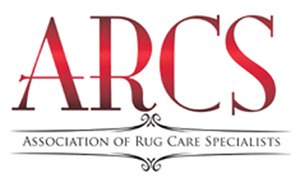
ABC Oriental Rug & Carpet Cleaning Co.
is a FOUNDING MEMBER of the
Association
of Rug Care Specialists.
"To Teach, Cultivate and Advance the Art and Science
of Rug Care"
GIVE THE
GIFT OF CLEAN!

Why not think 'outside the box' and give
a Gift Certificate for professional carpet, upholstery, or tile
& grout cleaning from ABC for any special occasion!
Does a special person have a favorite area rug or oriental rug that needs cleaning or repair? Just give us a call. You'll make their day!
Bring in the mats from a car and we'll clean them as well.
Contact
us if you live in the Ithaca, NY or surrounding areas and we will
tailor a special gift certificate just for you for any Special Occasion.

ABC
Carpet & Rug
Spotting Guide

The Standard of Excellence
